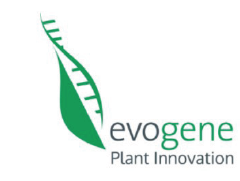A new-to-nature carboxylation module to improve natural and synthetic CO2 fixation
Marieke Scheffen, Daniel G. Marchal, Thomas Beneyton, Sandra K. Schuller, Melanie Klose, Christoph Diehl, Jessica Lehmann, Pascal Pfister, Martina Carrillo, Hai He, Selçuk Aslan, Niña S. Cortina, Peter Claus, Daniel Bollschweiler, Jean-Christophe Baret, Jan M. Schuller, Jan Zarzycki, Arren Bar-Even, Tobias J. Erb
LINK
The capture of CO2 by carboxylases is key to sustainable biocatalysis and a carbon-neutral bio-economy, yet currently limited to few naturally existing enzymes. Here, we developed glycolyl-CoA carboxylase (GCC), a new-to-nature enzyme, by combining rational design, high-throughput microfluidics and microplate screens. During this process, GCC’s catalytic efficiency improved by three orders of magnitude to match the properties of natural CO2-fixing enzymes. We verified our active-site redesign with an atomic-resolution, 1.96-Å cryo-electron microscopy structure and engineered two more enzymes that, together with GCC, form a carboxylation module for the conversion of glycolate (C2) to glycerate (C3). We demonstrate how this module can be interfaced with natural photorespiration, ethylene glycol conversion and synthetic CO2 fixation. Based on stoichiometrical calculations, GCC is predicted to increase the carbon efficiency of all of these processes by up to 150% while reducing their theoretical energy demand, showcasing how expanding the solution space of natural metabolism provides new opportunities for biotechnology and agriculture.
Design and engineering of E. coli metabolic sensor strains with a wide sensitivity range for glycerate
Selçuk Aslan, Elad Noor, Sara Benito Vaquerizo, Steffen N. Lindner, Arren Bar-Even
LINK
Microbial biosensors are used to detect the presence of compounds provided externally or produced internally. The latter case is commonly constrained by the need to screen a large library of enzyme or pathway variants to identify those that can efficiently generate the desired compound. To address this limitation, we suggest the use of metabolic sensor strains which can grow only if the relevant compound is present and thus replace screening with direct selection. We used a computational platform to design metabolic sensor strains with varying dependencies on a specific compound. Our method systematically explores combinations of gene deletions and identifies how the growth requirement for compound changes with the media composition. We demonstrate this approach by constructing a set of E. coli glycerate sensor strains. In each of these strains, a different set of enzymes is disrupted such that central metabolism is effectively dissected into multiple segments, each requiring a dedicated carbon source. We find an almost perfect match between the predicted and experimental dependence on glycerate and show that the strains can be used to accurately detect glycerate concentrations across two orders of magnitude. Apart from demonstrating the potential application of metabolic sensor strains, our work reveals key phenomena in central metabolism, including spontaneous degradation of central metabolites and the importance of metabolic sinks for balancing small metabolic networks.
Synthetic biology approaches for improving photosynthesis
Armin Kubis,
The phenomenal increase in agricultural yields that we have witnessed in the last century has slowed down as we approach the limits of selective breeding and optimization of cultivation techniques. To support the yield increase required to feed an ever-growing population, we will have to identify new ways to boost the efficiency with which plants convert light into biomass. This challenge could potentially be tackled using state-of-the-art synthetic biology techniques to rewrite plant carbon fixation. In this review, we use recent studies to discuss and demonstrate different approaches for enhancing carbon fixation, including engineering Rubisco for higher activity, specificity, and activation; changing the expression level of enzymes within the Calvin cycle to avoid kinetic bottlenecks; introducing carbon-concentrating mechanisms such as inorganic carbon transporters, carboxysomes, and C4metabolism; and rewiring photorespiration towards more energetically efficient routes or pathways that do not release CO2. We conclude by noting the importance of prioritizing and combining different approaches towards a continuous and sustainable increase of plant productivities.
Design and in vitro realization of carbon-conserving photorespiration
, , , , , , , , , , , and
Photorespiration limits plant carbon fixation by releasing CO2 and using cellular resources to recycle the product of ribulose-1,5-bisphosphate carboxylase/oxygenase (Rubisco) oxygenation, 2-phosphoglycolate. We systematically designed synthetic photorespiration bypasses that combine existing and new-to-nature enzymatic activities and that do not release CO2. Our computational model shows that these bypasses could enhance carbon fixation rate under a range of physiological conditions. To realize the designed bypasses, a glycolate reduction module, which does not exist in nature, is needed to be engineered. By reshaping the substrate and cofactor specificity of two natural enzymes, we established glycolate reduction to glycolaldehyde. With the addition of three natural enzymes, we observed recycling of glycolate to the key Calvin Cycle intermediate ribulose 1,5-bisphosphate with no carbon loss.
Daring metabolic designs for enhanced plant carbon fixation
Arren Bar-Even
Plant Science, Volume 273, August 2018, Pages 71-83 – LINK
Increasing agricultural productivity is one of the major challenges our society faces. While multiple strategies to enhance plant carbon fixation have been suggested, and partially implemented, most of them are restricted to relatively simple modifications of endogenous metabolism, i.e., “low hanging fruit”. Here, I portray the next generation of metabolic solutions to increase carbon fixation rate and yield. These strategies involve major rewiring of central metabolism, including dividing Rubisco’s catalysis between several enzymes, replacing Rubisco with a different carboxylation reaction, substituting the Calvin Cycle with alternative carbon fixation pathways, and engineering photorespiration bypass routes that do not release carbon. While the barriers to implement these elaborated metabolic architectures are quite significant, if we truly want to revolutionize carbon fixation, only daring engineering efforts will lead the way.
A short history of RubisCO: the rise and fall (?) of Nature’s predominant CO2 fixing enzyme.
Erb TJ, Zarzycki J
Current Opinion in Biotechnology Volume 49, February 2018, Pages 100-107 – LINK
Ribulose-1,5-bisphosphate carboxylase/oxygenase (RubisCO) is arguably one of the most abundant proteins in the biosphere and a key enzyme in the global carbon cycle. Although RubisCO has been intensively studied, its evolutionary origins and rise as Nature’s most dominant carbon dioxide (CO2)-fixing enzyme still remain in the dark. In this review we will bring together biochemical, structural, physiological, microbiological, as well as phylogenetic data to speculate on the evolutionary roots of the CO2-fixation reaction of RubisCO, the emergence of RubisCO-based autotrophic CO2-fixation in the context of the Calvin-Benson-Bassham cycle, and the further evolution of RubisCO into the ‘RubisCOsome’, a complex of various proteins assembling and interacting with the enzyme to improve its operational capacity (functionality) under different biological and environmental conditions.
Enzyme engineering: reaching the maximal catalytic efficiency peak.
Goldsmith M, Tawfik DS
Current Opinion in Structural Biology Volume 47, December 2017, Pages 140-150. – LINK
The practical need for highly efficient enzymes presents new challenges in enzyme engineering, in particular, the need to improve catalytic turnover (kcat) or efficiency (kcat/KM) by several orders of magnitude. However, optimizing catalysis demands navigation through complex and rugged fitness landscapes, with optimization trajectories often leading to strong diminishing returns and dead-ends. When no further improvements are observed in library screens or selections, it remains unclear whether the maximal catalytic efficiency of the enzyme (the catalytic ‘fitness peak’) has been reached; or perhaps, an alternative combination of mutations exists that could yield additional improvements. Here, we discuss fundamental aspects of the process of catalytic optimization, and offer practical solutions with respect to overcoming optimization plateaus.
Synthetic metabolism: metabolic engineering meets enzyme design
Erb TJ, Jones PR, Bar-Even A.
Current Opinion in Chemical Biology, Volume 37, April 2017, Pages 56-62 – LINK
Metabolic engineering aims at modifying the endogenous metabolic network of an organism to harness it for a useful biotechnological task, for example, production of a value-added compound. Several levels of metabolic engineering can be defined and are the topic of this review. Basic ‘copy, paste and fine-tuning’ approaches are limited to the structure of naturally existing pathways. ‘Mix and match’ approaches freely recombine the repertoire of existing enzymes to create synthetic metabolic networks that are able to outcompete naturally evolved pathways or redirect flux toward non-natural products. The space of possible metabolic solution can be further increased through approaches including ‘new enzyme reactions’, which are engineered on the basis of known enzyme mechanisms. Finally, by considering completely ‘novel enzyme chemistries’ with de novo enzyme design, the limits of nature can be breached to derive the most advanced form of synthetic pathways. We discuss the challenges and promises associated with these different metabolic engineering approaches and illuminate how enzyme engineering is expected to take a prime role in synthetic metabolic engineering for biotechnology, chemical industry and agriculture of the future.
Biochemical and synthetic biology approaches to improve photosynthetic CO2-fixation.
Erb TJ, Zarzycki J.
Current Opinion in Chemical Biology, Volume 34, October 2016, Pages 72–79 – LINK
There is an urgent need to improve agricultural productivity to secure future food and biofuel supply. Here, we summarize current approaches that aim at improving photosynthetic CO2-fixation. We critically review, compare and comment on the four major lines of research towards this aim, which focus on (i) improving RubisCO, the CO2-fixing enzyme in photosynthesis, (ii) implementing CO2-concentrating mechanisms, (iii) establishing synthetic photorespiration bypasses, and (iv) engineering synthetic CO2-fixation pathways.






